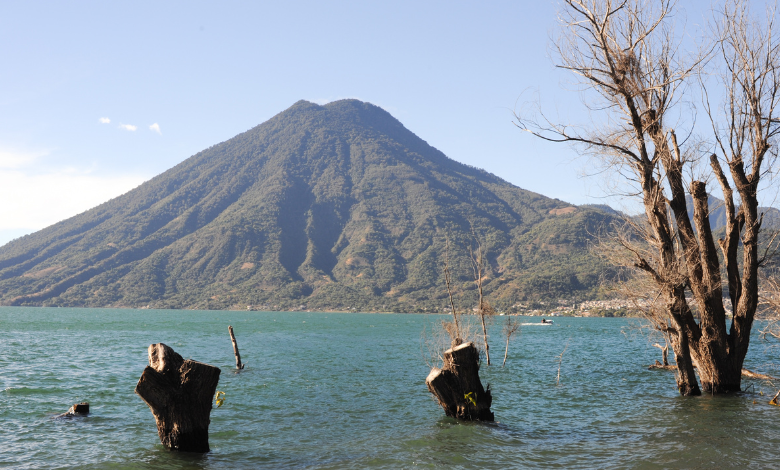Volcan san pedro atitlan activo o pasivo

Volcan san pedro atitlan activo o pasivo of the most charming natural landmarks in Guatemala, towering over the serene waters of Lake Atitlán. Located inside the Western Highlands, this stratovolcano is a popular destination for hikers, adventure seekers, and nature enthusiasts. But one question regularly arises amongst traffic: is Volcán San Pedro energetic or passive? In this text, we dive deep into the records, modern repute, and natural splendor of Volcán San Pedro to uncover the answer.
Geographical Overview of Lake Atitlán
Lake Atitlán is often described as one of the maximum stunning lakes inside the world, nestled in a large volcanic crater. Surrounded with the aid of three implementing volcanoes—San Pedro, Tolimán, and Atitlán—this stunning frame of water is a chief appeal in Guatemala. Volcán San Pedro, status at about three,020 meters (nine,908 feet), dominates the landscape on the lake’s southern shore, supplying breathtaking perspectives that attract traffic from around the world.
Is Volcán San Pedro Active or Passive?
Understanding the hobby repute of Volcán San Pedro is crucial for each safety and interest. A volcano is considered energetic if it has erupted these days or shows signs and symptoms of eruptive activity, including earthquakes or gasoline emissions. Volcán San Pedro, however, is currently classified as dormant. This means that whilst it has erupted inside the beyond, it has no longer shown any tremendous volcanic pastime in latest records.
The ultimate recognised eruptions of Volcán San Pedro passed off heaps of years ago, and there aren’t any facts of any eruptions in modern-day instances. Although it is not taken into consideration an instantaneous chance, it stays a fascinating geological shape that captivates scientists and vacationers alike.
History of Volcanic Activity
Volcán San Pedro’s records is wealthy with volcanic events, though most passed off lengthy earlier than human agreement in the vicinity. The lack of new hobby has allowed the encircling area to flourish, with vibrant groups developing on its slopes and close to the lake. However, it’s critical to word that even dormant volcanoes can turn out to be active again, although no such indicators exist for San Pedro at this time.
Volcán San Pedro’s Geological Features
This stratovolcano is frequently composed of layers of hardened lava, ash, and volcanic rocks. Its steep slopes are covered with lush flora, and its crater, despite the fact that eroded through the years, affords a clean reminder of its fiery past. The geology of San Pedro makes it an interesting website for observe, with its volcanic soil contributing to the rich agricultural land determined nearby.
Flora and Fauna Around Volcán San Pedro
The biodiversity around Volcán San Pedro is exquisite. The vicinity is home to quite a number plant species, such as dense cloud forests, pine trees, and precise flora that thrive in volcanic soil. Birdwatchers often flock to the region to identify rare species which includes the resplendent quetzal and numerous types of hummingbirds. Mammals like armadillos, rabbits, and foxes additionally inhabit the slopes, including to the ecological fee of the volcano.
Hiking and Tourism at Volcán San Pedro
Hiking Volcán San Pedro is a popular interest that attracts adventurers keen to revel in the beautiful views of Lake Atitlán from its summit. The hike is taken into consideration reasonably challenging, typically taking round four to six hours to complete, depending on the hiker’s tempo. The path winds thru coffee plantations, forests, and rocky paths, rewarding climbers with panoramic vistas of the lake and surrounding volcanoes.
Cultural Significance of Volcán San Pedro
For the nearby indigenous groups, Volcán San Pedro holds deep cultural and religious importance. It is regularly featured in local legends and is considered a sacred vicinity. The Tz’utujil people, one of the predominant ethnic corporations residing across the volcano, view it as a dad or mum of the lake and an crucial a part of their background.
Safety Tips for Hiking Volcán San Pedro
If you’re making plans to hike Volcán San Pedro, it’s crucial to prepare properly. Wear appropriate hiking equipment, bring masses of water, and keep in mind hiring a neighborhood guide who knows the terrain well. The climate can trade fast, so it is advisable to start early inside the morning to keep away from afternoon showers. Always check neighborhood advisories earlier than embarking for your adventure to make sure a safe and enjoyable experience.
Environmental Conservation Efforts
Conservation efforts are ongoing to guard the herbal splendor and biodiversity of Volcán San Pedro. Local companies and communities work together to preserve the trails, reforest broken areas, and promote sustainable tourism. Despite those efforts, challenges inclusive of deforestation, littering, and the effect of growing tourism persist.
How to Get to Volcán San Pedro
Reaching Volcán San Pedro is highly truthful. The nearest metropolis, San Pedro La Laguna, serves as a gateway to the volcano. You can reach San Pedro La Laguna by boat from other cities round Lake Atitlán or by means of road from large towns like Antigua or Guatemala City. Once in town, you may effortlessly set up guided hikes or explore the region on your personal.
Local Communities Around the Volcano
The cities surrounding Volcán San Pedro are colourful and complete of tradition. San Pedro La Laguna, specifically, is thought for its lively atmosphere, bustling markets, and pleasant locals. Many of these communities rely upon agriculture, tourism, and conventional crafts, with the volcano playing a critical function of their way of lifestyles.
The Best Views from Volcán San Pedro
The views from Volcán San Pedro are simply exceptional. On a clear day, you can see the whole expanse of Lake Atitlán, flanked by way of the alternative volcanoes and dotted with colourful villages. Sunrises and sunsets are especially magical, casting a golden glow over the landscape this is positive to depart a long-lasting affect.
Conclusion
Volcán San Pedro stands as a silent mum or dad over Lake Atitlán, inviting adventurers and nature lovers to discover its scenic trails and rich history. While it’s far presently dormant, the volcano remains a vital part of the neighborhood panorama, lifestyle, and atmosphere. Whether you’re trekking its slopes or virtually admiring it from a distance, Volcán San Pedro is an revel in that captures the coronary heart and imagination of all who go to.
FAQs About Volcán San Pedro
Is Volcán San Pedro safe to hike?
Yes, the hike is usually safe, however it’s endorsed to go along with a guide for safety and navigation.
How lengthy does it take to hike Volcán San Pedro?
The hike generally takes approximately four-6 hours spherical trip, depending in your tempo.
What is the exceptional time to go to Volcán San Pedro?
The first-rate time to go to is all through the dry season, from November to April, to keep away from rain and muddy trails.
Is Volcán San Pedro presently active?
No, Volcán San Pedro is considered dormant, with out a recent interest.
Can you camp on Volcán San Pedro?
Camping is possible but much less not unusual; it’s important to test nearby regulations and conditions




